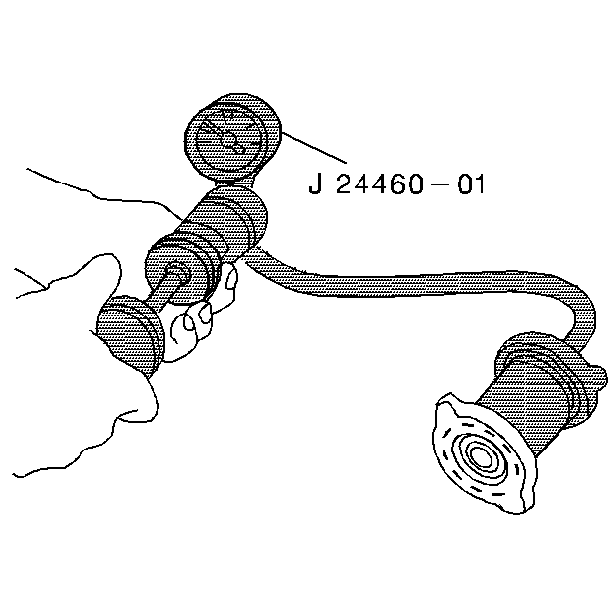Cooling System Leak Testing Cooling System Pressure Test
Leak Testing Procedure (On Vehicle)
Tools Required
J 24460-01 Cooling System and Cap Pressure Tester
- After the system has cooled, remove the radiator/surge tank pressure cap.
- Connect the cooling system tester J 24460-01 to the radiator/surge tank.
- Apply normal system operating pressure. Do not exceed 138 kPa (20 psi).
- Watch the gauge needle for an indication of a leak. Examine all cooling system connections and components, including the radiator and the heater core, for leaking coolant.
- Tighten the hose connections or repair as required.
- Check the radiator/surge tank cap with J 24460-01 in order to ensure the cap maintains the correct pressure.
- If the radiator leaks during the pressure test, mark the leak area so the leak can be located once the radiator has been removed from the vehicle.
Caution: Under pressure, the temperature of the solution in the radiator can be considerably higher, without boiling. Removing the radiator cap while the engine is hot (pressure is high), will cause the solution to boil instantaneously, with explosive force. The solution will spew out over the engine, fenders, and the person removing the cap. Serious bodily injury may result. Flammable antifreeze, such as alcohol, is not recommended for use at any time. Flammable antifreeze could cause a serious fire.
Caution: In order to help avoid being burned, do not remove the radiator cap while the engine and the radiator are hot. Scalding fluid and steam can be blown out under pressure if the cap is removed too soon.



Cooling System Leak Testing Exhaust Leak Test
System Check
Notice: Exhaust gasses may enter the cooling system through a leaking cylinder head gasket. Exhaust gasses combine with water to form acids. These acids are harmful to the cooling system and the engine.
In order to check for exhaust gases leaking into the cooling system, do the following steps:
- Drain the coolant system until the coolant level stands just above the top of the cylinder heads. Refer to Cooling System Draining and Filling .
- Disconnect the upper radiator hose. Refer to Radiator Hose Replacement .
- Remove the thermostat. Refer to Engine Coolant Thermostat Replacement .
- Remove the drive belt. Refer to Drive Belt Replacement in Engine Mechanical.
- Start the engine and accelerate several times.
- Inspect the coolant level for the appearance of bubbles or a significant rise in the coolant level. If the coolant level rises or bubbles appear, coolant may be leaking into engine. Inspect the spark plugs. Refer to Spark Plug Visual Diagnosis in Engine Electrical.
